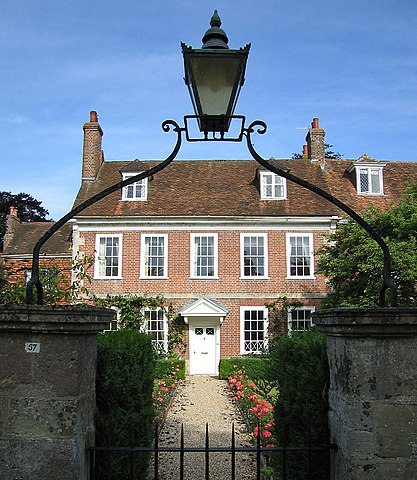Georgian architecture, prevalent in the 18th and early 19th centuries, is an architectural style named after the reigns of the first four British monarchs of the House of Hanover—George I, George II, George III, and George IV. This style is characterized by a focus on symmetry, proportion, and classical influences. Exploring the symmetry and grandeur of Georgian architecture reveals its enduring appeal and timeless aesthetic. Here are key features that contribute to the symmetrical and grand nature of Georgian buildings:
Symmetrical Facades:
- One of the defining characteristics of Georgian architecture is its emphasis on symmetry. Buildings typically feature a centrally placed entrance, flanked by evenly spaced windows and other architectural elements. This sense of balance imparts a formal and harmonious quality to the facade.

- One of the defining characteristics of Georgian architecture is its emphasis on symmetry. Buildings typically feature a centrally placed entrance, flanked by evenly spaced windows and other architectural elements. This sense of balance imparts a formal and harmonious quality to the facade.
Centralized Entrances:
- Georgian buildings often have a central entrance, frequently adorned with a classical portico or pedimented door surround. This centralization enhances the visual impact of the entrance and contributes to the overall symmetry of the design.
Classical Proportions:
- Georgian architects were heavily influenced by classical architecture, particularly the works of ancient Greece and Rome. The buildings are designed with classical proportions, such as the use of the golden ratio, creating a sense of balance and harmony in the overall composition.
Regularly Spaced Windows:
- Windows in Georgian architecture are typically evenly spaced and aligned, contributing to the symmetry of the facade. The windows are often rectangular and have a proportional relationship with the overall structure.
Palladian Influences:
- Palladian architecture, inspired by the designs of Andrea Palladio, greatly influenced Georgian architecture. Palladian features, such as the use of pediments, columns, and symmetry, are prevalent in Georgian buildings and contribute to their grandeur.
Cornices and Dentil Molding:
- Elaborate cornices and dentil molding are common decorative elements in Georgian architecture. These features add a level of detail and sophistication to the exteriors, emphasizing the grandeur of the buildings.
Hipped Roofs and Symmetrical Dormers:
- Georgian buildings often have hipped roofs with symmetrical dormers. The roofline contributes to the overall sense of balance, and the dormers provide additional light to the upper floors while maintaining the symmetry of the design.
Brick or Stone Construction:
- Georgian architecture commonly features brick or stone construction. The use of these durable materials adds to the substantial and enduring nature of the buildings, contributing to their grand appearance.
Interior Symmetry:
- The focus on symmetry extends to the interior of Georgian homes. Rooms are often arranged with a central hallway and symmetrical placement of doors and windows. This interior design reinforces the formal and balanced character of the architecture.
Geometric Shapes:
- Georgian architecture often incorporates geometric shapes, such as squares and rectangles, in its design. This use of geometric forms contributes to the sense of order and regularity that defines the style.
Monumental Porticos:
- Many Georgian buildings feature monumental porticos with columns, often of the Ionic or Corinthian order. These porticos add a sense of grandeur to the entrance and serve as prominent architectural features.
Expansive Gardens and Landscaping:
- Georgian architecture is often complemented by expansive gardens and landscaping. The layout of these outdoor spaces is carefully planned to enhance the overall symmetry and grandeur of the property.
In summary, Georgian architecture’s emphasis on symmetry, classical proportions, and grand architectural elements creates a sense of enduring elegance. Its influence can be seen not only in historical structures but also in contemporary designs that draw inspiration from the formal and balanced aesthetics of this distinctive style. The symmetrical and grand characteristics of Georgian architecture continue to captivate and inspire architects and homeowners alike.











